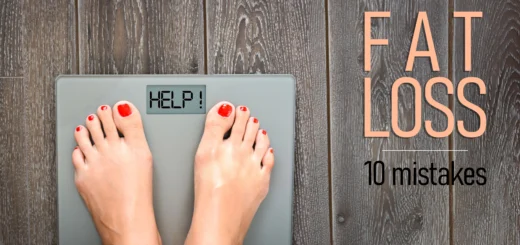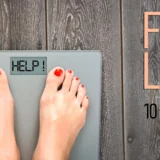Fasting – for a Healthier You

Fasting has become a popular method for getting fit, supporting digestion, and expanding life span. Whether you’re a beginner or an experienced faster, this article will furnish you with the vital data to help you start and prevail in your process.
What is Fasting?
It is a preparation that has been connected with a wide range of possible clinical benefits, including weight decrease, glucose control, heart prosperity, etc
Pros of Fasting
Some of its benefits include:
1- Weight reduction: This can assist with promoting weight reduction by decreasing calorie consumption and expanding digestion.
2- Enhanced insulin sensitivity: It can assist with further developing insulin responsiveness, which can decrease the risk of creating type 2 diabetes.
3- Decreased inflammation: It can assist with diminishing inflammation in the body, which is linked to various ailments.
4- Lower risk of coronary heart disease: It has been related to a lower hazard of coronary illness and may assist with bringing down Blood pressure, and cholesterol levels.
Cons:
1- Hunger: During the process time frame, you might encounter appetite and desires, which can be hard to make due.
2- Tiredness: Certain individuals might encounter exhaustion or low energy levels during this process time frame, especially in the early stages of starting this process.
3- Possibility for overfilling: Assuming you overeat during the eating window, you might not attain the advantages.
How to begin fasting?
From water fasting to intermittent and calorie limitation, there is a wide range that fits virtually every way of life. The following are a couple of the most common sorts:
1- Water fasting: Includes drinking just water for a fixed portion of time.
2- Intermittent fasting: It is a technique that includes substituting times of fasting and eating. There are various schedules for discontinuous fasting, however, the most popular ones incorporate the 16/8 technique and the 5:2 method.
The 16/8 Method
The 16/8 technique includes fasting for 16 hours and afterward eating during an 8-hour window for example, you might fast from 8 pm to 12 pm the next day, and then eat your meals between 12 pm and 8 pm.
The 5:2 Method
The 5:2 method involves eating normally for 5 days of the week and then reducing calorie intake to 500-600 calories on 2 non-consecutive days of the week.
3-Juice fasting: Involves just drinking vegetable or natural product juice for a specific period.
4- Partial fasting: Processed foods, caffeine, or beverages are
eradicated from the eating regimen for a set period.
5- Calorie limitation: Calories are confined for a couple of days consistently.
How Long to Fast?
The length of time to fast will vary depending on the fast and the individual’s goals. Water fasting, which includes keeping away from food and drink except water, can be done for up to 7 days or more under medical supervision. Juice fasting, which involves consuming only juice for a certain period, can last for several days to a few weeks. Intermittent fasting can be done daily for an extended period.
Helps in Weight Loss
It can be a successful method for getting thinner, but it is not a magic solution. To shed kilos while fasting, making a calorie shortage by decreasing calorie consumption during eating periods is significant. It’s also important to eat a balanced diet during eating periods to guarantee that you are getting all the necessary nutrients.

Some weight reduction diets for Fasting
There are various eating regimens followed for weight decrease. Here are the most renowned ones
1- Low-carb diets: A ketogenic diet is an example of a low-carb diet. This diet involves diminishing carb utilization and growing fat and protein conformation
2- Low-fat diets: Low-fat eating regimens incorporate decreasing fat intake and extending carb utilization.
3- Mediterranean diet: It is a plant-based diet that features entire food varieties, good fats, and lean protein. This diet promotes weight reduction, upgrades heart well-being, and decreases inflammation.
4- Plant-based diets: Plant-based diets include just plant-based food sources, similar to natural products, vegetables, entire grains, and vegetables.
5-Paleo diet: The paleo diet incorporates food sources available to our ancestors, like lean meats, fish, fruits, vegetables, nuts, and seeds.
6- Whole30 diet: The Whole30 diet involves stopping specific food groups, like grains, dairy, and sugar, for 30 days.
Some questions answered
What can I drink while fasting?
The following are a few food varieties and drinks drink while fasting. Water. Plain or carbonated water contains no calories and will keep you hydrated during a quick. Coffee and tea – without added sugar, milk, or cream, etc.
Do you lose belly fat by fasting?
As per experts switching between fasting and eating can bring numerous medical advantages, including weight reduction, and diminishing gut fat. Nonetheless, to lose midsection fat and get the supplements you want, you should practice good eating habits, and restrict sweet treats.
What not to eat after fasting?
Some nutritionist experts say that staying away from added sugars and refined starches may likewise assist individuals with getting in shape.
Does sleeping count as fasting?
Indeed, sleeping is viewed as a fasting period. Hence, one doesn’t consume food or beverages during this state.
Conclusion
Religious purposes, detoxification, or weight loss are some reasons for doing this however, the main purpose of this practice is to provide the stomach with a little rest. So, go ahead and give it a try- start fasting today!
























